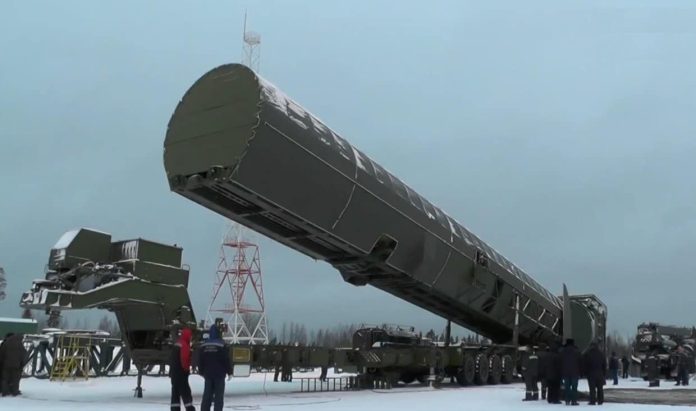На полігоні в Росії під час випробування вибухнула ядерна міжконтинентальна балістична ракета РС-28 «Сармат». Інцидент стався 20 або 21 вересня, про що стало відомо завдяки супутниковим знімкам, отриманим OSINT-дослідниками з Planet Labs. Цей вибух підкреслює серйозні технічні проблеми, з якими зіткнулася російська оборонна індустрія.
Ракета, за словами дослідників, ймовірно, здетонувала під час заправки, ще до моменту фактичного запуску. Ця гіпотеза пояснює, чому стратегічний розвідувальний літак НАТО Cobra Ball не виявив активності в зоні інциденту під час події.
Технічні деталі аварії
За повідомленнями, вибух стався безпосередньо у шахті під час процесу заправки ракети рідким паливом, що могло призвести до детонації. Супутникові знімки показують масивний кратер та ознаки масштабних руйнувань на полігоні. Також на місце події прибули чотири пожежні машини, щоб загасити лісову пожежу, викликану вибухом.
Ця аварія підкреслює серйозні проблеми в російській ракетній програмі, зокрема у розробці стратегічного комплексу РС-28 «Сармат». Вибух вказує на вразливість системи під час критичних операцій, таких як заправка рідинними компонентами.
Характеристики ракети «Сармат»
РС-28 «Сармат» є стратегічним ракетним комплексом п’ятого покоління шахтного базування. Це міжконтинентальна балістична ракета (МБР) з рідинним паливом, яка має довжину 35 метрів і стартову масу 208 тонн. Її дальність польоту становить до 16 тисяч кілометрів, а маса закидання – близько 10 тонн.
Росія неодноразово заявляла, що ракета «Сармат» здатна доставляти ядерні боєголовки до будь-якої точки світу. Однак вибух під час випробувань ставить під сумнів надійність цієї зброї, на яку покладали великі надії в російській армії.
Ця аварія може стати серйозним ударом для російських військових амбіцій, оскільки РС-28 «Сармат» вважалася однією з ключових складових ядерного стримування Росії. Такий провал може викликати додаткові питання щодо готовності цієї системи до використання і здатності російської оборонної промисловості підтримувати стратегічний арсенал на належному рівні.


